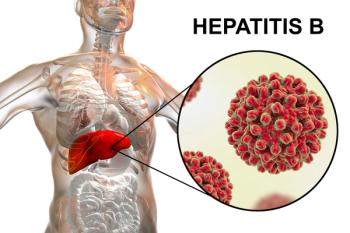
Strong trial results prompt update of breast cancer guidelines
New guidelines treat breast cancer.
For the second time in less than a year, oncologists and pharmacists will have new guidelines to review before treating patients with breast cancer.
Based on new data presented at the 2001 San Antonio Breast Cancer Symposium, guidelines for breast cancer therapy were updated by the National Comprehensive Cancer Network (NCCN), a nonprofit alliance of 19 of the leading cancer centers in the United States. NCCN is a resource used by many health professionals and patients in the fight against cancer.
Trial results that led to the update included the ATAC (Arimidex and Tamoxifen Alone or in Combination), a randomized, double-blind study of 9,366 patients from 380 cancer centers in 21 countriesthe largest breast cancer treatment trial conducted to date. The trial group consisted of early breast cancer patients who had completed surgery (+/- chemotherapy) and were candidates for adjuvant hormonal therapy.
Results showed Arimidex (anastrozole, AstraZeneca), an aromatase inhibitor, provided superior disease-free survival compared with tamoxifen, an antiestrogen, as adjuvant therapy for hormone receptor-positive breast cancer in postmenopausal women. This information led to an NCCN recommendation that anastrozole be considered an alternative to tamoxifen as a first-line agent in this particular group of women. Anastrozole and Femara (letrozole, Novartis), another aromatase inhibitor, block the conversion of androgens to estrogens in the body. In postmenopausal women, this is the main source of circulating estrogen. Aromatase inhibitors are not appropriate therapy for premenopausal women.
Although study results also suggested anastrozole has a better toxicity profile than tamoxifen, Regina Holbrook, R.Ph., BCOP, senior attending pharmacist at Massachusetts General Hospital Cancer Center in Boston, said the side-effect profiles of tamoxifen and the aromatase inhibitors overlap to a good degree. "There are often patients who are intolerant of one drug but will be able to successfully tolerate another," she said.
Holbrook believes this is one way the new treatment option will be helpful and said having choices in drug therapy is very useful. She also feels the new guidelines may alter prescribing practices for newly diagnosed breast cancer patients since they are now more likely to start therapy with an aromatase inhibitor. "It remains to be seen if and how this will impact patients already on tamoxifen. Tamoxifen has been an extremely powerful tool in the management of breast cancer," she added. The trial results do not address whether women taking tamoxifen should be switched to anastrozole.
Premenopausal women with metastatic disease that do not receive adjuvant chemotherapy may benefit from taking an LHRH agonist or antagonist to achieve ovarian suppression. Early evidence, which led to this change in the treatment guidelines, suggests ovarian suppression achieved with these agents provides similar benefits to ovarian ablation.
Determining HER2 protein status on all breast cancer patients is another change made to the guidelines within the past year. Approximately 20%-25% of women with breast cancer have tumors that overexpress this oncogene. HER2 encodes a growth factor receptor on cell surfaces, which can lead to uncontrolled cell growth. Presence of HER2 is thought to be an indicator of poor survival and decreased relapse-free periods.
"This is an important change, considering how HER2 status is now used not only as an indicator for determining treatment, but also as a prognostic factor," said Brenna Brown, Pharm.D., BCOP, clinical oncology pharmacist at H. Lee Moffitt Cancer Center and Research Institute at the University of South Floridaone of the 19 NCCN participating cancer centers.
Some cancer centers have already been doing this for years, Brown said. Tumors expressing HER2 can be treated with Herceptin (trastuzumab, Genentech), a monoclonal antibody that selectively binds to the receptor. According to the guidelines, women with metastatic, estrogen-receptor negative or hormone refractory tumors should now be treated with trastuzumab with or without chemotherapy. Brown added that once a HER2 positive patient with these characteristics is started on treatment, trastuzumab therapy should be initiated and continued indefinitely, even as chemotherapeutic agents are changed.
NCCN collects outcome data and regularly integrates the results into its treatment guidelines. The most recent changes in recommendations follow a full set of guidelines published in December 2001. Pharmacists can find these updates included in the complete 2002 version of the breast cancer treatment guidelines at the NCCN Web site ( www.nccn.org ).
"I believe they are recognized as the standard and are followed in everyday practice," Brown said of the NCCN guidelines. She estimates they are used in greater than 80% of cases in her practice, where she is involved in the treatment and monitoring of approximately 80 breast cancer patients per day.
Newsletter
Pharmacy practice is always changing. Stay ahead of the curve with the Drug Topics newsletter and get the latest drug information, industry trends, and patient care tips.











































































































































































































